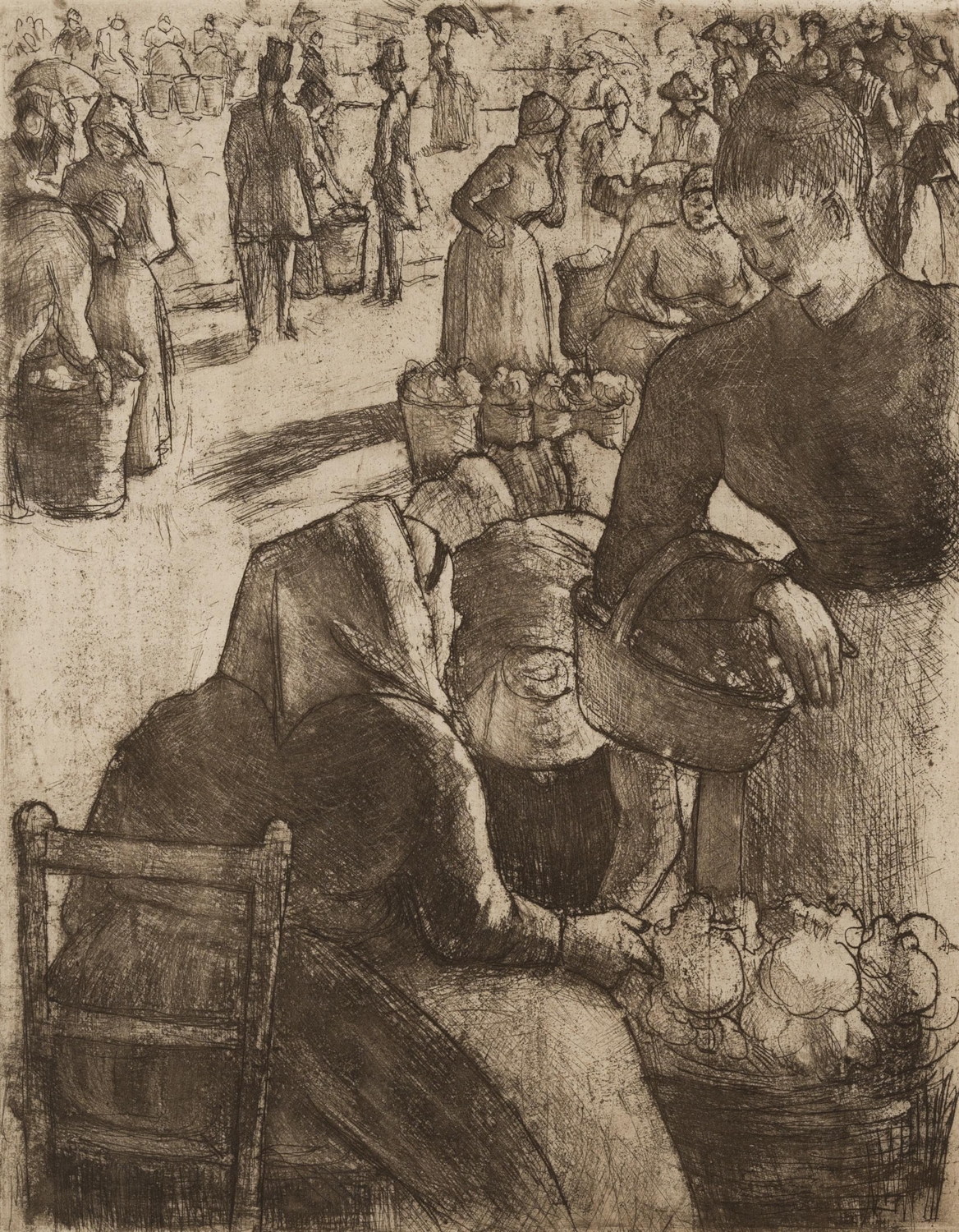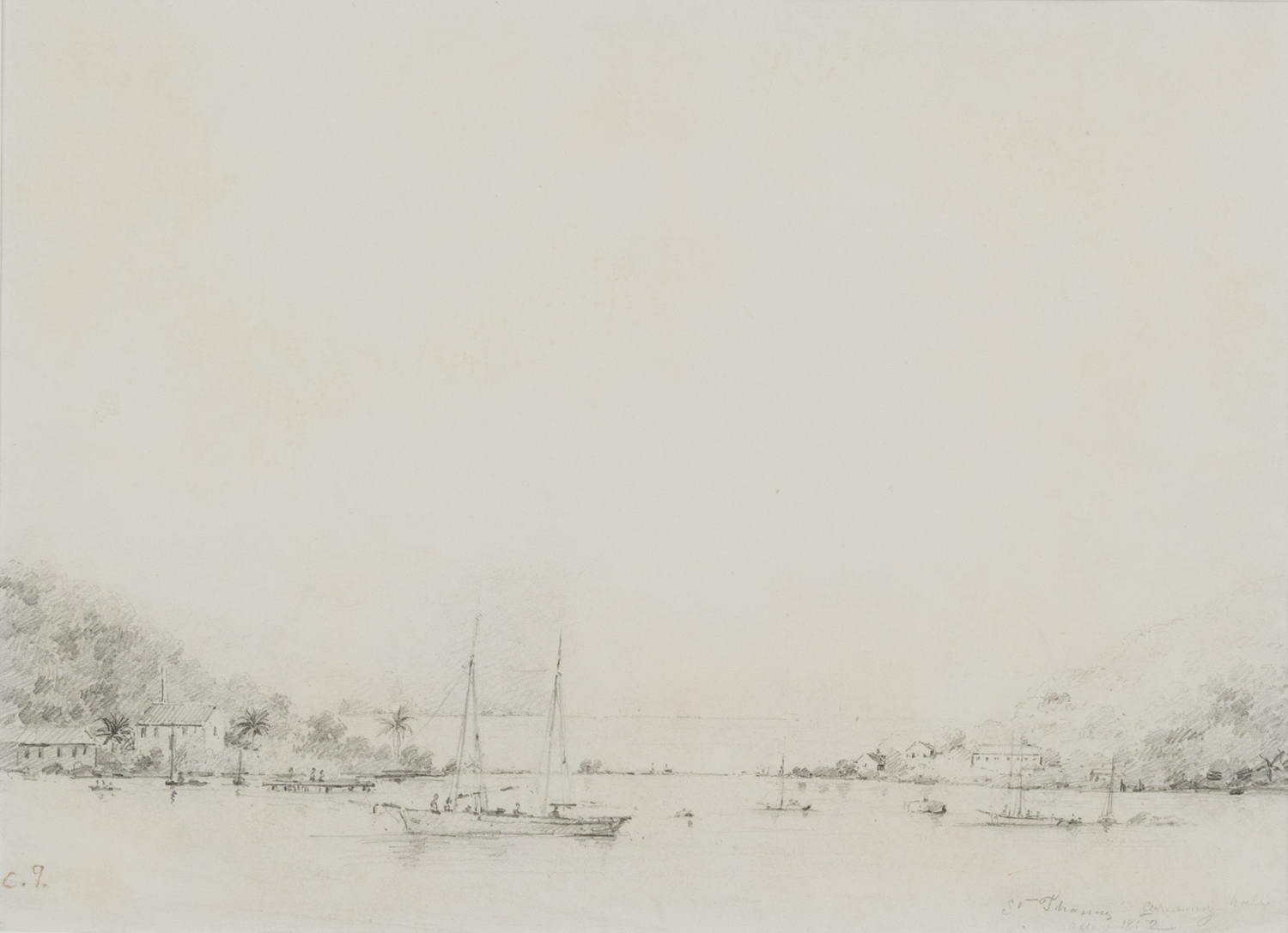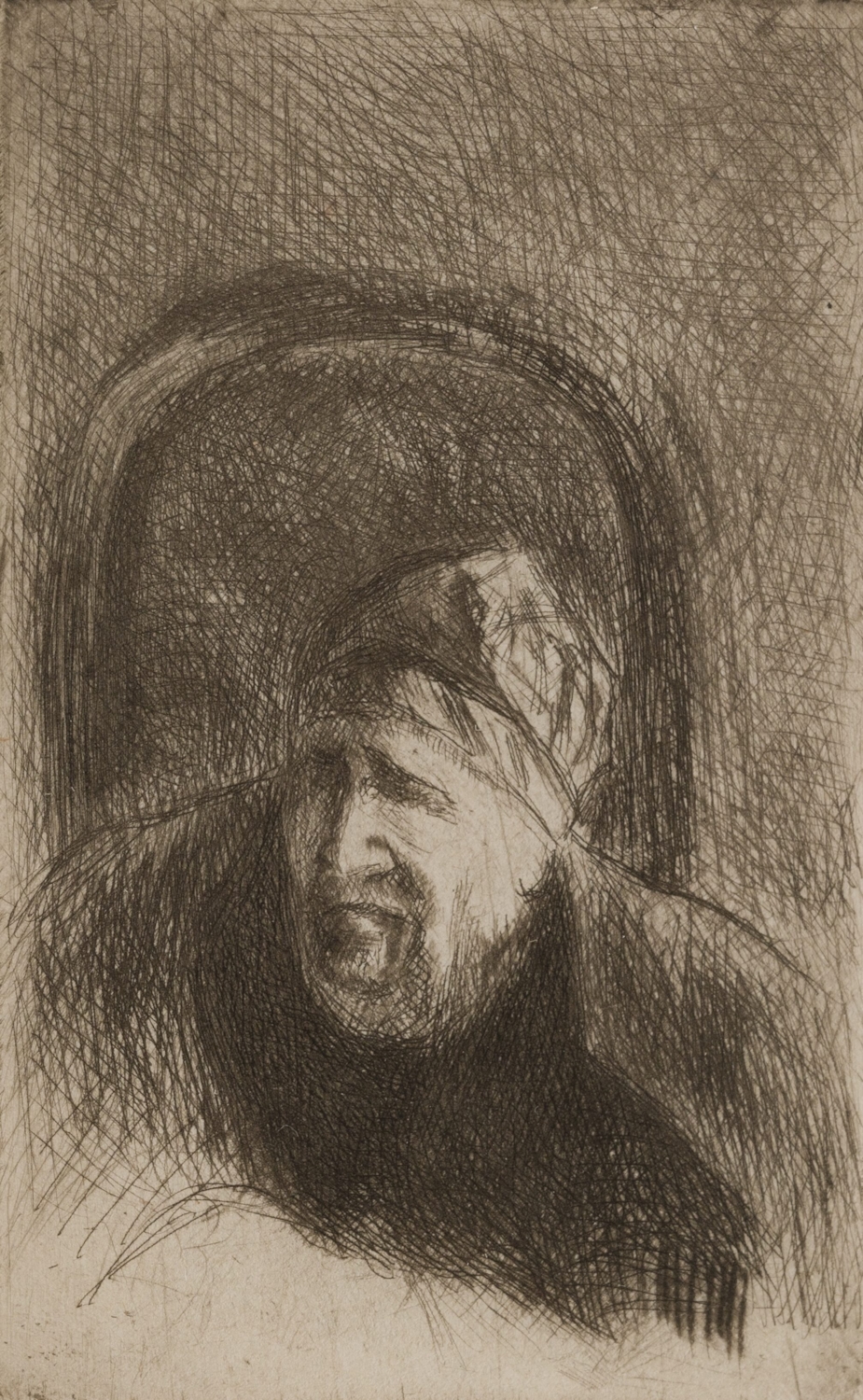Camille Pissarro
1830 - 1903
La Place du Havre, Effet de Pluie
33 x 41 cm (13 x 16 ¹/₈ inches)
Signed lower right, C. Pissarro 97
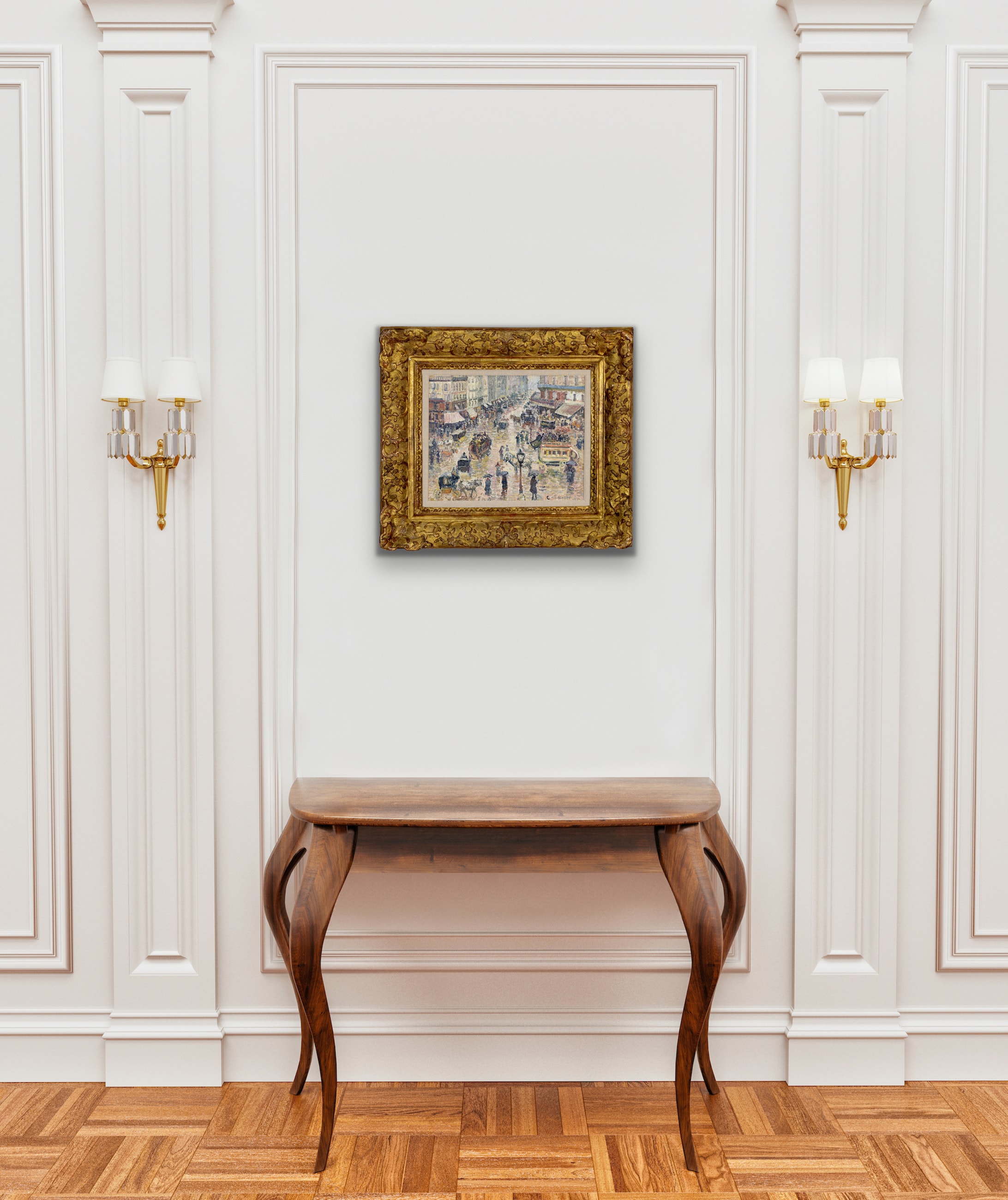
Oscar Schmitz, Dresden & Zürich, acquired from the above, 15th February 1900 (the present work was one of the fifty-seven artworks deposited at the Kunsthaus, Zürich on 20th October 1931)
Estate of Oscar Schmitz [Edward A. Schmitz], by 1933 (the painting remained in the care of the Kunsthaus, Zürich, after which the Schmitz Estate transferred the collection to the Kunstmuseum, Basel on 22nd February 1934)
Wildenstein & Co., Paris, acquired from the above by 1936 (amongst sixty-two other French works from the collection)
Mme Henri Goldet, Paris, acquired from the above, November 1936
Bertrand Vernes, Paris, by descent from the above, 1973
Private collection, London, by descent from the above, 2014
Private collection, Switzerland, acquired from the above
Zürich, Kunsthaus, Französische Maler des XIX Jahrhunderts, 1933, p. 9, no. 27 (titled Beim Bahnhof Saint-Lazare)
Paris, Wildenstein & Co., La Collection Oscar Schmitz: Chefs-d’Œuvre de la Peinture Française du XIXe Siècle, 1936, pp. 106-07 & 142, no. 48 (illustrated)
Paris, Galerie André Weil, Exposition Pissarro, 1950, no. 44 (titled La Place du Havre à Paris, Effet de Pluie)
Paris, Musée d'art et d'histoire du Judaïsme (MAJH), Alfred Dreyfus: Vérité et Justice, 2025, p. 43, no. 32 (illustrated)
K. Scheffler, ‘Die Sammlung Oskar Schmitz in Dresden’, in Kunst und Künstler, 1920-21, p. 186 (titled Rue de la Pépinière, incorrectly dated 1893)
M. Dormoy, ‘La Collection Schmitz à Dresde’, in L’Amour de l’Art 7, October 1926, p. 342 (titled Place du Havre sous la Pluie)
The Oscar Schmitz Collection, 1936, pp. 106-07, no. 48 (titled The Place du Havre, illustrated)
L. R. Pissarro & L. Venturi, Camille Pissarro, Son Art - Son Œuvre, vol. I, Paris, 1939, no. 982; vol. II, Paris, 1939, pl. 198 (titled La Place du Havre, Paris, Effet de Pluie)
L. Pissarro & J. Rewald, Camille Pissarro: Letters to His Son Lucien, New York, 1943, pp. 306-07
J. Bailly-Herzberg, Correspondance de Camille Pissarro, vol. IV, Paris, 1991, pp. 318-19, 321-22 & 324, nos. 1362, 1365 & 1367
K. Adler, ‘Camille Pissarro. City and Country in the 1890s', in Studies on Camille Pissarro, London & New York, 1987, pp. 99-100
R. R. Bretell & J. Pissarro, The Impressionist and the City, Pissarro’s Series Paintings, New Haven & London, 1992, pp. 51 & 57, no. 42 (titled Place du Havre, Paris: Rain Effect, illustrated)
J. Rewald, Camille Pissarro: Letters to His Son Lucien, Boston, 2002, pp. 306-07
J. Pissarro & C. Durand-Ruel Snollaerts, Pissarro, Catalogue Critique des Peintures, vol. III, Paris, 2005, p. 726, no. 1156 (illustrated)
Camille Pissarro
biography
In 1869 Camille moved to Louveciennes. The outbreak of the Franco-Prussian War in 1870 prompted him to relocate to London, where Camille painted a series of landscapes around Norwood and Crystal Palace. At this time, Pissarro and his close friend Claude Monet were able to visit museums together, where they could study and expand their understanding of the tradition of British landscape painting. It was also here that he married Julie Vellay, with whom he would have seven children. Upon returning in June 1871 to Louveciennes, Camille discovered that many of the works he had left in his house had disappeared or become damaged during the Franco-Prussian war.
Camille settled in Pontoise with Julie in the summer of 1871 where he was able to gather a close circle of friends around him for the next ten years. Here he was able to continue building his relationships with Cézanne, Monet, Renoir and Degas, expressing his desire to create an alternative to the Salon. This represented a longing to break from the rigid tradition of French academic painting – Camille believed that he and his peers deserved recognition for the new tradition they were shaping. Cézanne repeatedly came to stay with Pissarro, and under Camille’s influence he learned to study nature more patiently, even copying one of Camille’s landscapes in order to learn his teacher’s technique.
The first Impressionist group exhibition in 1874 earned the Impressionists much criticism for their art. Pissarro was in fact the only artist to exhibit in all eight of the Impressionist exhibitions, with the final one taking place in 1886. Camille’s main subject matter during those years was the rural landscape, wherein great emphasis was placed on highlighting the idealism of life on the farm. Pissarro believed that peasants and their land remained untainted by the corruption of industrialisation. He admired the figures in these rural landscapes, considering their existence and lifestyle to be a symbol of innocence and purity in an age of violent change.
One of the few collectors to show interest in Camille’s work was Paul Gauguin. Having acquired a small collection of Impressionist works, he turned to Camille for advice on becoming a painter himself. For several years Gauguin closely followed his mentor; although their friendship was fraught with disagreement and misunderstandings, Gauguin nonetheless wrote shortly before Camille’s death in 1903: “He was one of my masters, and I do not deny him.”
In the 1880s Camille moved from Pontoise to nearby Osny, before settling in 1884 in Éragny-sur-Epte, a small Normandy village northwest of Paris. In 1885, Camille met both Paul Signac and Georges Seurat after being introduced by his eldest son Lucien. He was fascinated by their efforts to replace the intuitive approach of the Impressionists with the “Divisionist” method, a scientific study of nature’s phenomena based on optical laws. Despite having reached his mid-fifties, Camille did not hesitate to follow the two young innovators. However, after a few years Camille felt restricted by Seurat’s theories and returned to his more spontaneous technique, whilst retaining the lightness and purity of colour acquired during his Divisionist phase.
In the last years of his life Camille divided his time between Paris, Rouen, Le Havre and Éragny, where he continued to explore the varying effects of light and weather in various series of works. Many of these paintings are considered to be amongst his best, with his series of Paris street scenes becoming one of the most collectable themes in his oeuvre. By the time Pissarro died in 1903, his career was flourishing and he had become widely recognised. Today his work can be found in all of the major museums throughout the world.
Camille Pissarro
biography
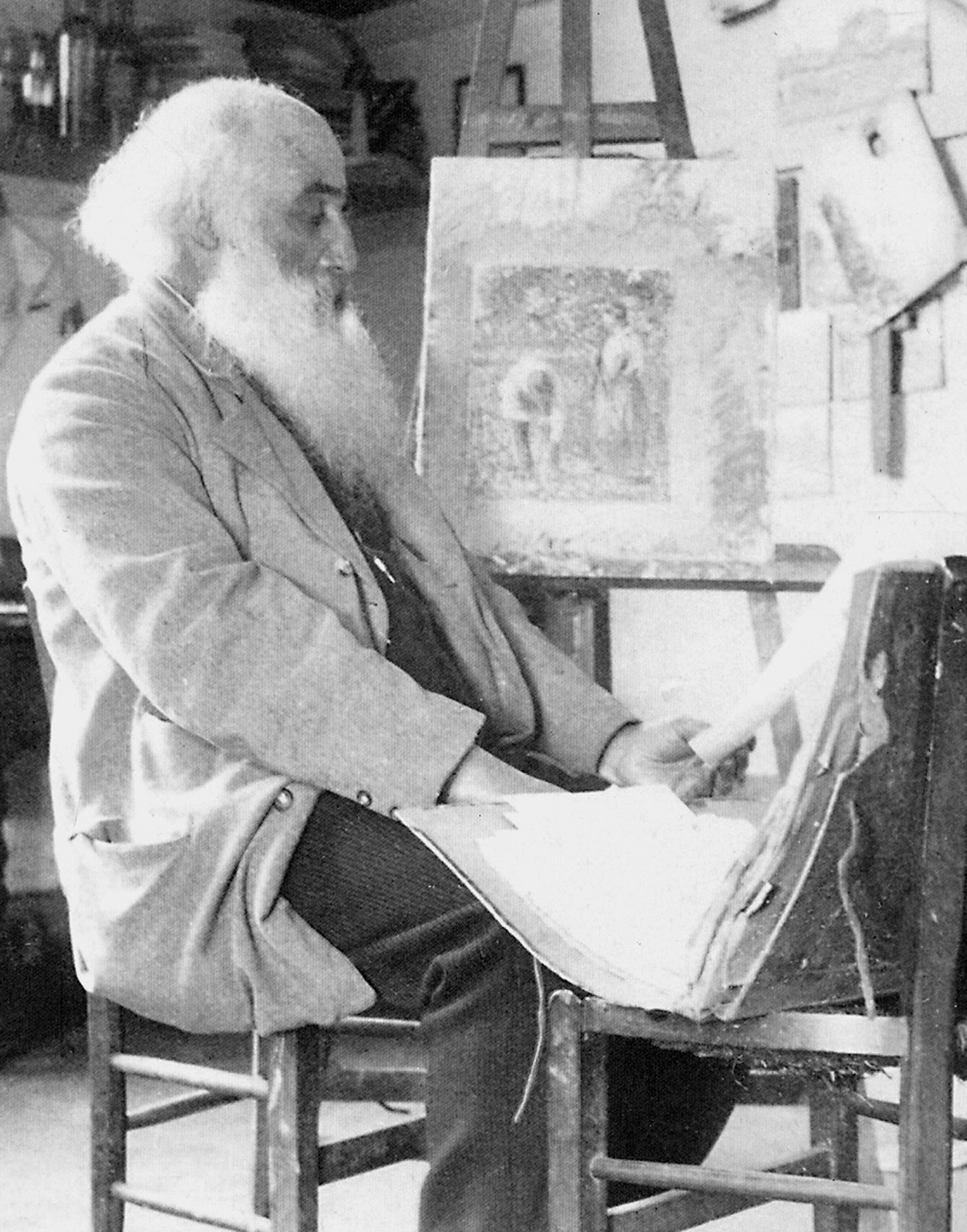
you may also like
1830 - 1903
Marché aux légumes, à Pontoise
25.5 x 20 cm (10 x 7 ⁷/₈ inches)
1830 - 1903
St. Thomas Harbour
20.8 x 28.6 cm (8 ¹/₄ x 11 ¹/₄ inches)
1830 - 1903
Grand'mère dans son fauteuil
9.9 x 6.1 cm (3 ⁷/₈ x 2 ³/₈ inches)
1830 - 1903
Portrait of a man wearing a bowler hat
4.7 x 3.2 cm (1 ⁷/₈ x 1 ¹/₄ inches)
1830 - 1903
Le Père Melon Sciant du Bois
46.5 x 62 cm (18 ¹/₄ x 24 ³/₈ inches)



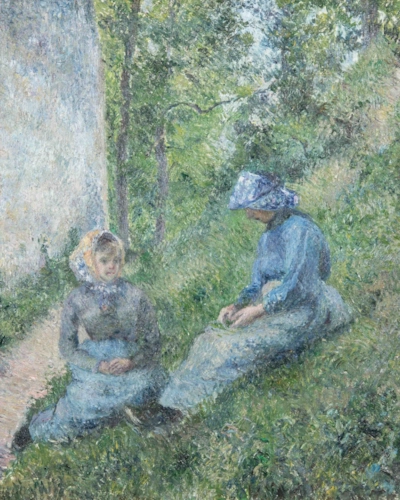
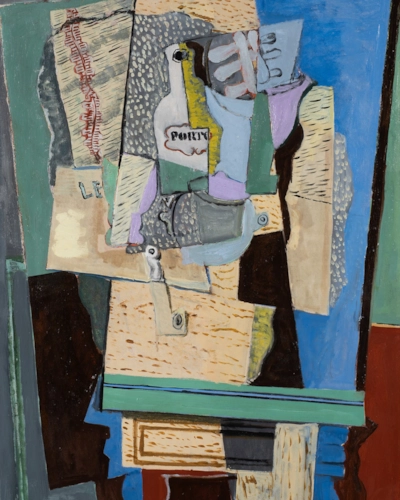
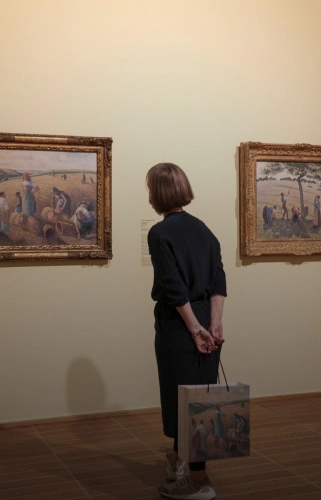
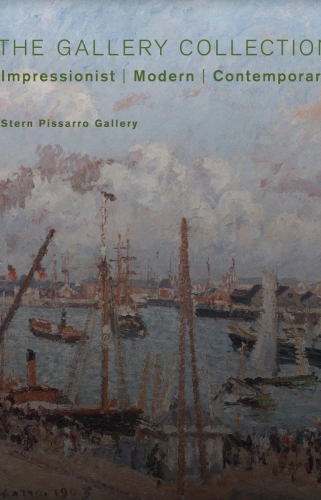
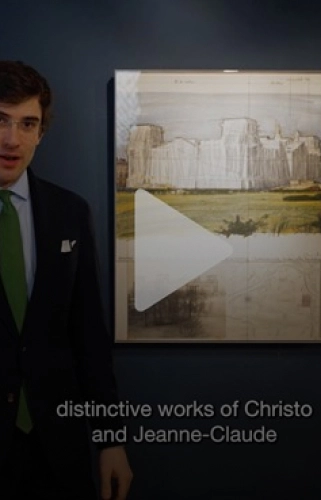
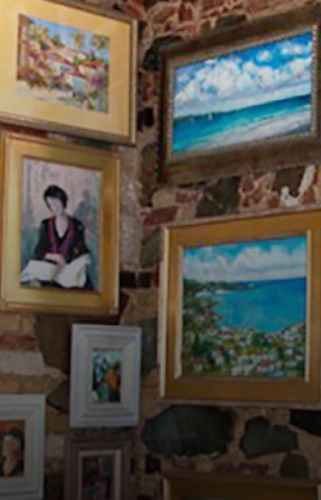

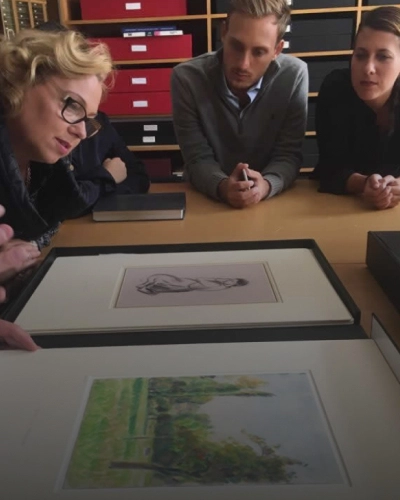

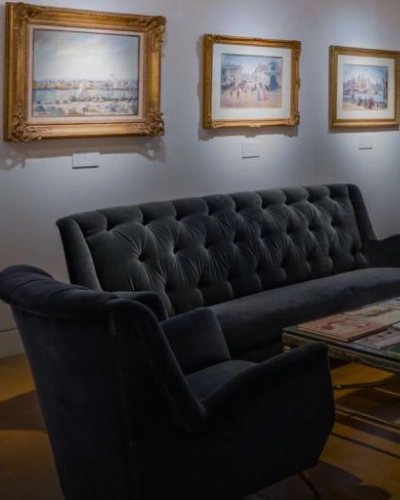
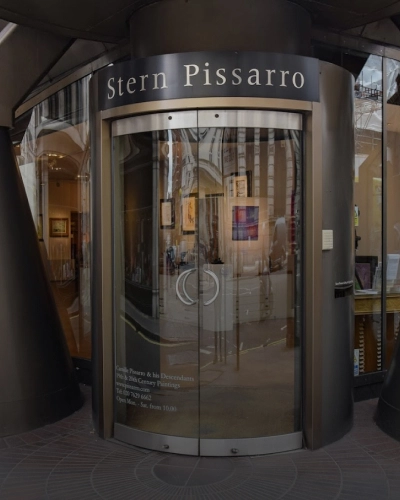
_1552024T121340.167.jpg?width=2000&height=2000&mode=max&scale=both&quality=100&format=jpg)

